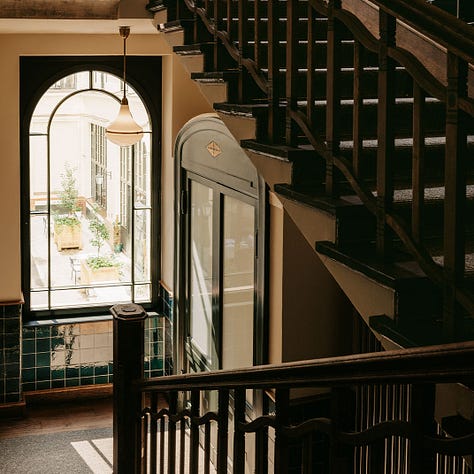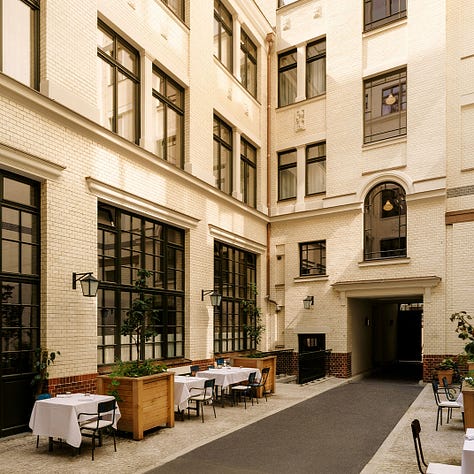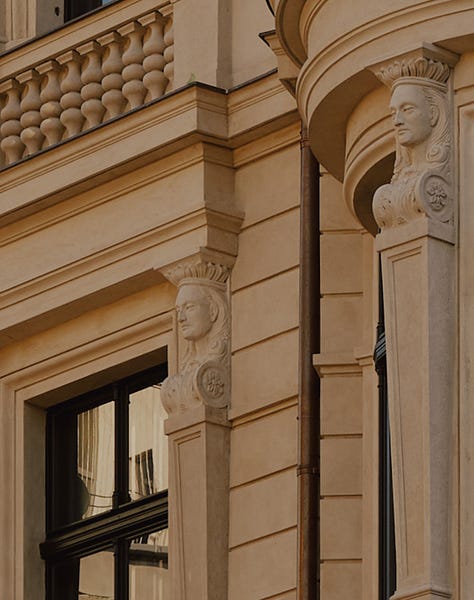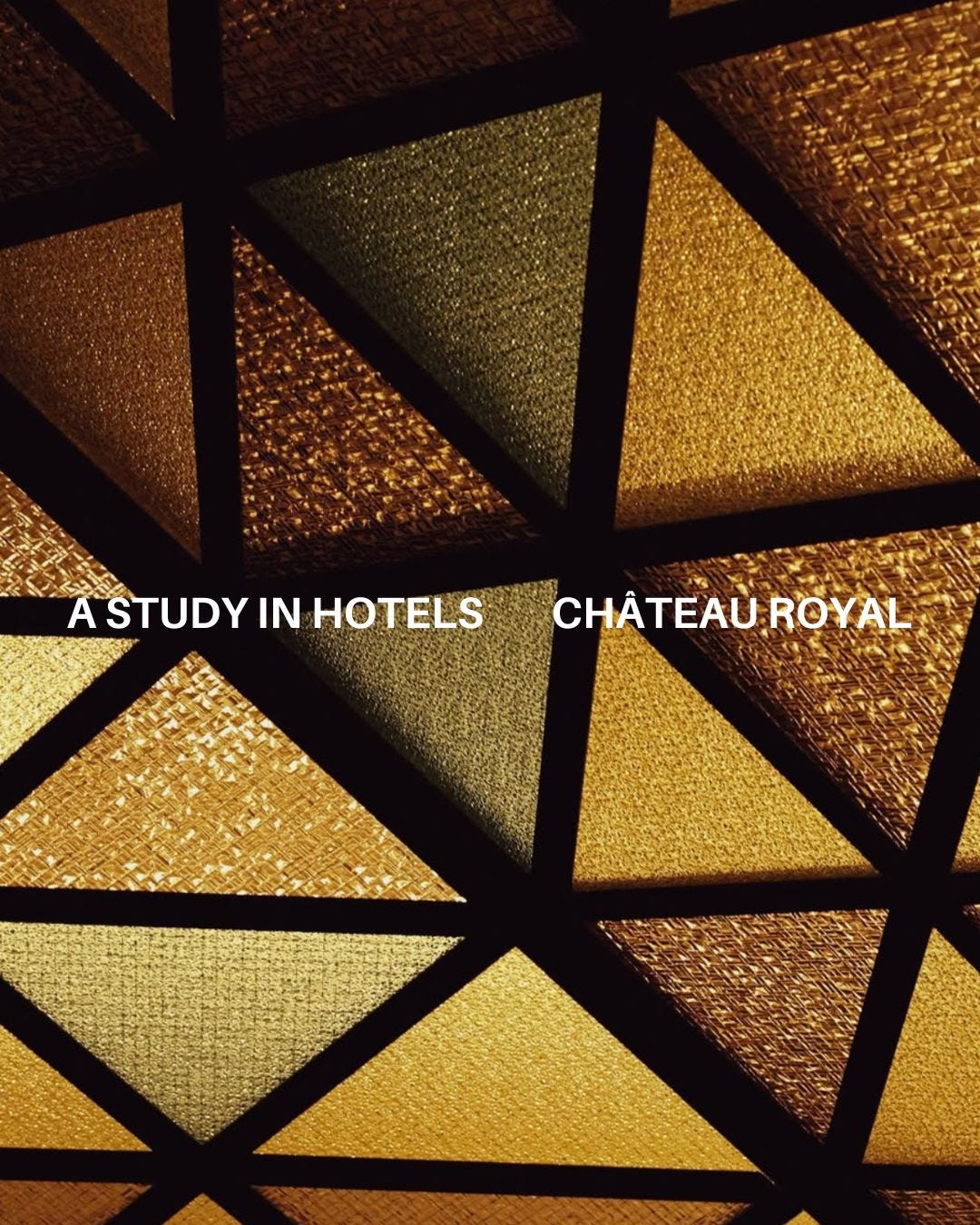A Study in Hotels: Château Royal Berlin
A Brutalist shell softened by terrazzo, art, and storytelling—this former spy headquarters is now one of Berlin’s most design-forward stays.
Berlin has always been a city of layers—its contradictions worn plainly like a trench coat in winter. At once grand and gritty, radical and refined, it continues to resist tidy definitions. In this way, it feels only natural that one of the city’s most compelling new hotels should rise not in some glimmering new build, but in a restored 19th-century structure that once served as East Berlin's Ministry of Construction, and later, a Stasi headquarters. Château Royal, the first hotel venture from Berlin hospitality heavyweights Stephan Landwehr and Boris Radczun, has taken that complex history and turned it into something rich, nuanced, and quietly transformative.
The duo, best known for cult-favorite restaurants Grill Royal and Pauly Saal, took nearly a decade to bring Château Royal to life. Their approach was as precise as it was personal: no outside investors, no corporate templates, just a vision of a hotel that could embody the Berlin they love—artful, offbeat, and ultimately, human. With the help of David Chipperfield Architects and interior designer Irina Kromayer, they stripped the building back to its bones, revealing original stone staircases, terrazzo floors, and turn-of-the-century ornamentation, then layered it with contemporary interventions that feel as if they’ve always belonged.



What emerged is not so much a hotel as it is a living, breathing Gesamtkunstwerk—a total work of art. Each of the 93 rooms is anchored by a site-specific artwork commissioned from one of over 100 Berlin-based artists. Corridors double as gallery walls, the bar is a cinematic pastiche of moody textures and mirrored surfaces, and the restaurant is a stage for modern European cuisine that refuses to be overly serious.
But to call Château Royal simply an "art hotel" would be to undersell its ambition. It is also a masterclass in interiors, in tone, in mood. This is a place where design does not just decorate, it narrates—pulling you through the building in a series of thoughtful, tactile scenes. It also reclaims a certain kind of understated luxury for Berlin, one that speaks in hushed materials, local craftsmanship, and unforced elegance.






Keep reading with a 7-day free trial
Subscribe to SPACES OF MY DREAMS to keep reading this post and get 7 days of free access to the full post archives.




